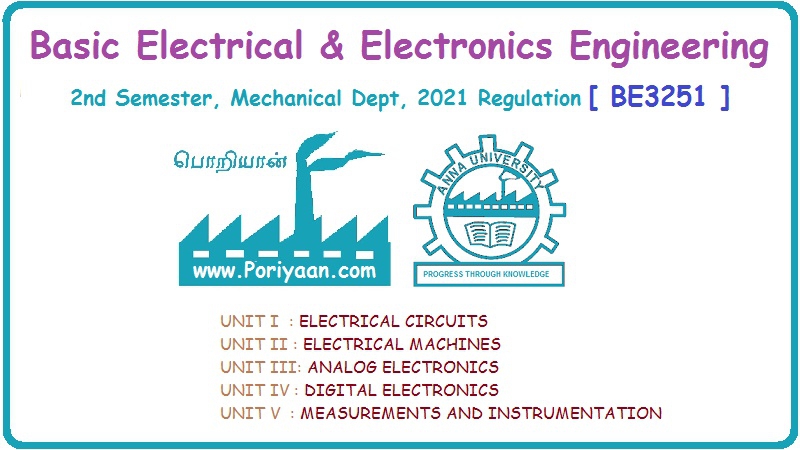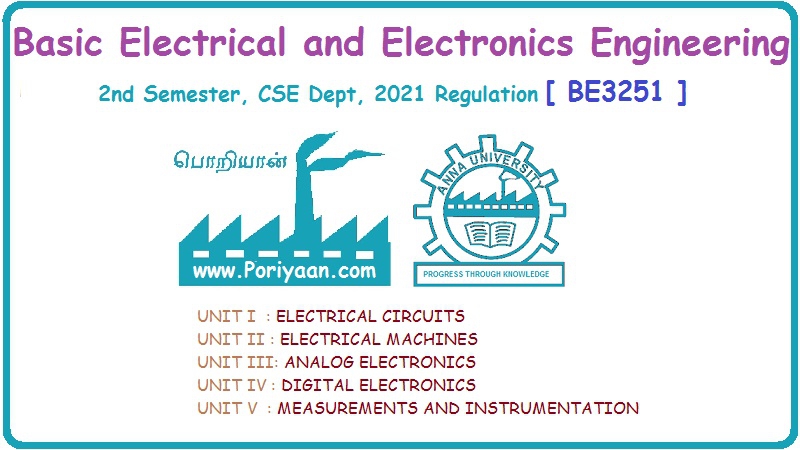Basic Electrical and Electronics Engineering: Unit II: Electrical Machines
Types of DC Motors
The DC motors are classified into three types based on the field winding connection with the armature.
TYPES OF DC MOTORS The DC motors are classified into three types based on the field winding connection with the armature. 1. DC shunt motor 2. DC series motor 3. DC compound motor (i) Long shunt DC compound motor (ii) Short shunt DC compound motor ● In DC shunt motor, the field winding is connected in parallel with the armature as shown in figure 2.24. Here shunt field winding has more number of turns and less cross sectional area. Hence, shunt field winding resistance (Rsh) is high and less shunt field current ● The relationship between V, Eb and Ia. V = Eb + IaRa ● In DC series motor, the field winding is connected in series with the armature as shown in figure 2.25 ● The series field winding has less number of turns of thick wire and hence will posses a low resistance. ● In DC compound motors, both series field and shunt field windings are connected with the armature. ● It is classified into two types. They are: (i) Long shunt DC compound motor: ● In long shunt DC compound motor, the shunt field winding is connected in parallel with the series combination of series field windings and armature. ● The relationship between V, Eb and Ia is given below. V = Eb + Ia (Ra + Rse) Ia = Ise IL = Ia + Ish (ii) Short shunt DC compound motor ● In short shunt DC compound motor, the series field winding is connected in series with the parallel combination of armature and shunt field winding. The relationship V, Eb and Ia is given by V = Eb + IL Rse + Ia Ra Vsh = V - IL Rse Ise = IL DC shunt motor 1. Lathe machines 2. Blowers and fans 3. Centrifugal pumps 4. Reciprocating pumps 5. Machine tools 6. Drilling machines 7. Rolling mills 8. Conveyor belt and 9. Wood-working machines DC Series Motor 1. Electric traction (i.e.,) Electric trains, 2. Cranes, 3. Hoists, 4. Conveyors, 5. Elevators, 6. Trolleys. DC Cumulative Compound Motor 1. Punching machines, 2. Elevators, 3. Shears, 4. Rolling mills, 5. Printing presses, 6. Air compressors, 7. Flywheel, 8. Metal stamping machine and 9. Reciprocating pumps. Differential DC Compound Motor ● Increase in speed with increase in load. ● Not suitable for any practical applications. Problem 2.16 A 250V shunt motor takes a total current of 10A. The shunt field and armature resistance are 200Ω and 0.3 Ω respectively. Determine (i) Value of back e.m.f. (ii) gross mechanical power in the armature. Solution : Armature current, Ia = 10 - 1.25 = 8.75 A Back e.m.f. Eb = V - Ia Ra = 250 - 8.75 × 0.3 = 247.3 V [Ans.] (ii) Mechanical power developed = Eb Ia = 247.3 × 8.75 = 2163.8 W [Ans.] Problem 2.17 A 230 V motor has an armature circuit resistance of 0.6 Ω If the full-load armature current is 30 A and no-load armature current is 4A, find the change in back e.m.f. from no load to full-load. Solution: Eb = V - Ia Ra At no-load, Eb = 230 - 4 × 0.6 = 227.6 V At full-load, Eb = 230 - 30 × 0.6 = 212 V Change in back e.m.f = 227.6 - 212 = 15.6 V [Ans.] Problem 2.18 A 4-pole, 500 V shunt motor has 600 wave-connected conductors in the armature. The full-load armature current is 60 A and the flux per pole is 0.03 Wb. The armature resistance is 0.2 Ω and the contact drop is 1 V per brush. Calculate the full-load speed of the motor. Solution : V = Eb + Ia Ra + Brush drop 500 = Eb + 60 × 0.2 + 2 × 1 ⸫ Eb = 500 - 60 × 0.2 - 2 × 1 = 486 V Now, Eb = Problem 2.19 The counter e.m.f. of a shunt motor is 227 V, the field resistance is 160Ω and field current is 1.5 A. If the line current is 39.5A, find the armature resistance. Also find the armature current when the motor is stationary. Solution : Applied voltage, V = Ish Rsh = 1.5 × 160 = 240 volts Armature current, Ia = IL - Ish = 39.5 - 1.5 = 38 A V = Eb + Ia Ra At the moment of start-up, the armature is stationary so that Eb = 0.1. DC shunt motor
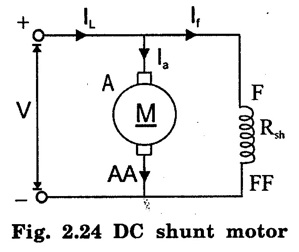

2. DC Series motor
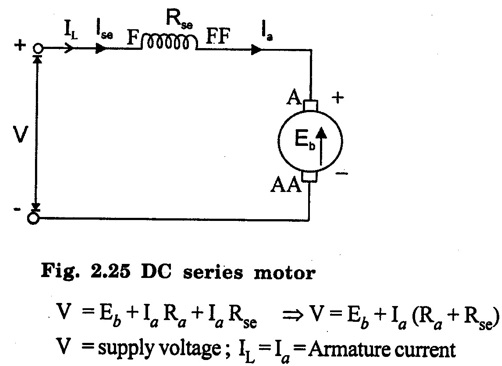
3. DC Compound Motor
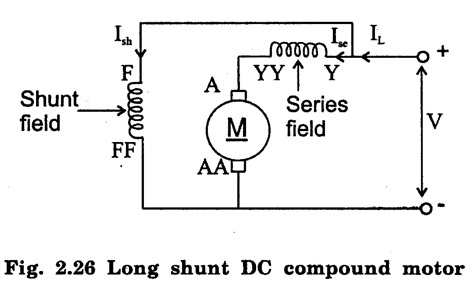
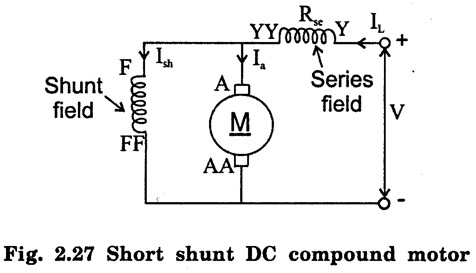

4. Applications of DC motors





Basic Electrical and Electronics Engineering: Unit II: Electrical Machines : Tag: : - Types of DC Motors
Related Topics
Related Subjects
Basic Electrical and Electronics Engineering
BE3251 2nd semester Mechanical Dept | 2021 Regulation | 2nd Semester Mechanical Dept 2021 Regulation
Basic Electrical and Electronics Engineering
BE3251 2nd Semester CSE Dept 2021 | Regulation | 2nd Semester CSE Dept 2021 Regulation
